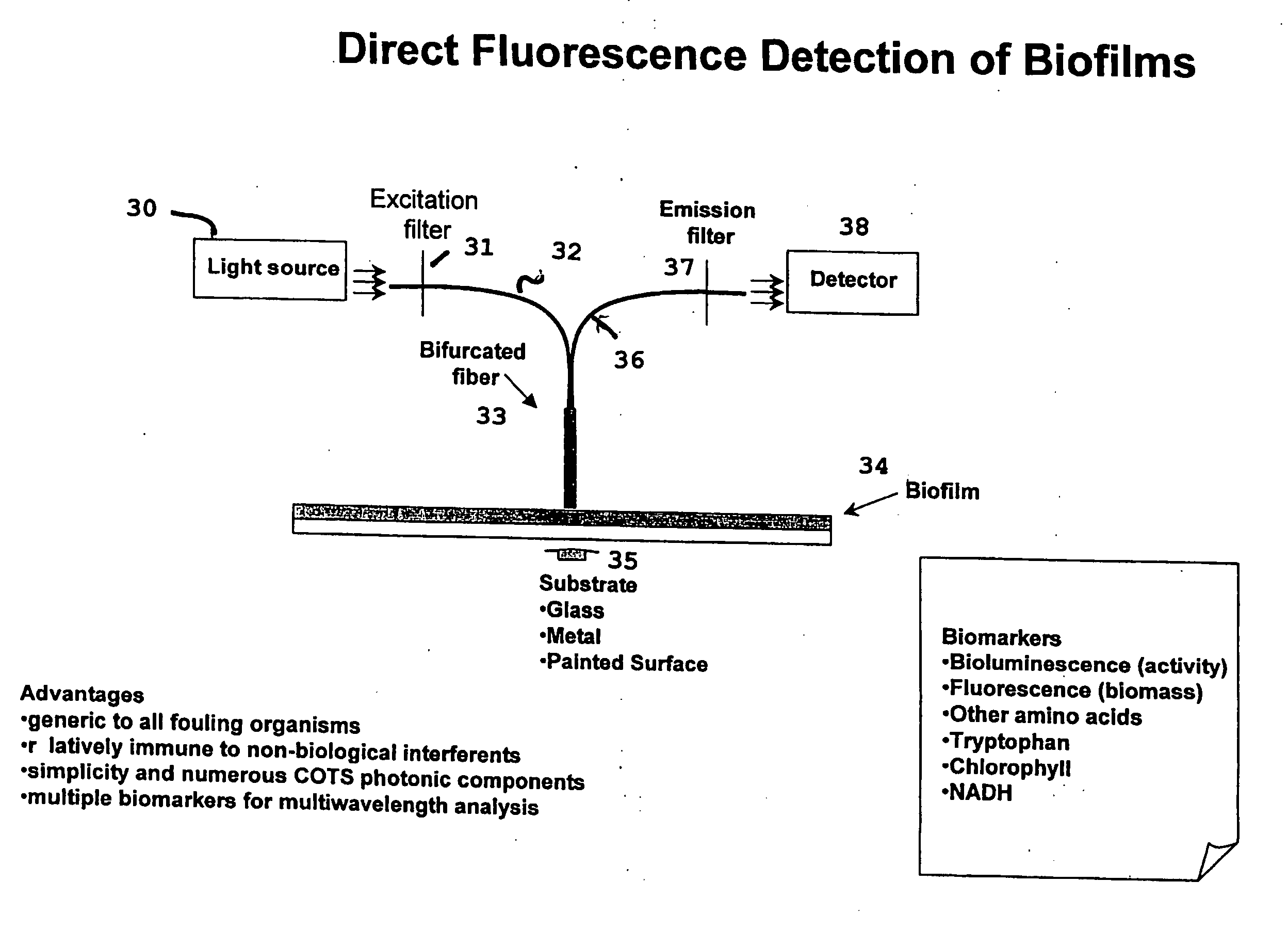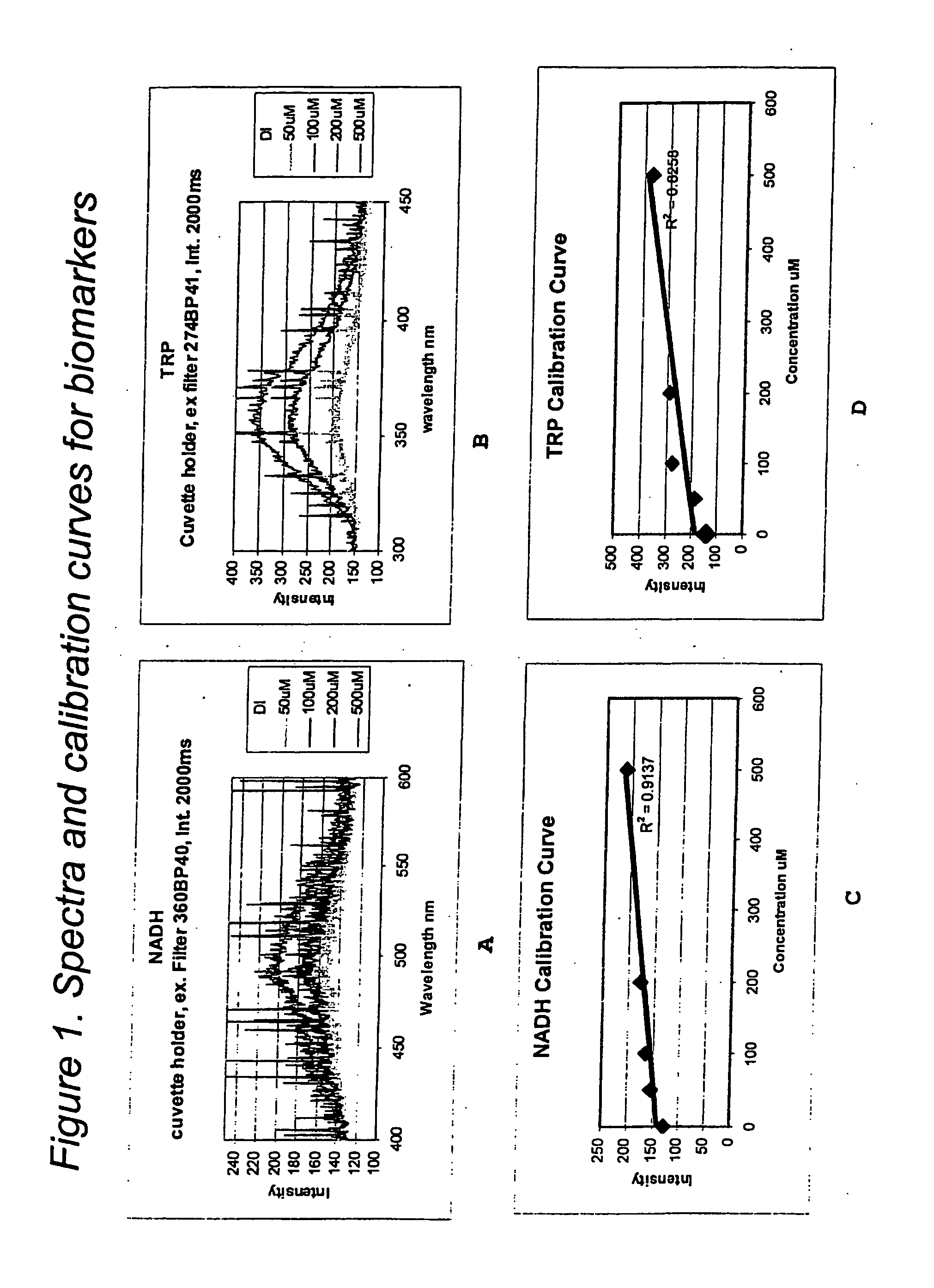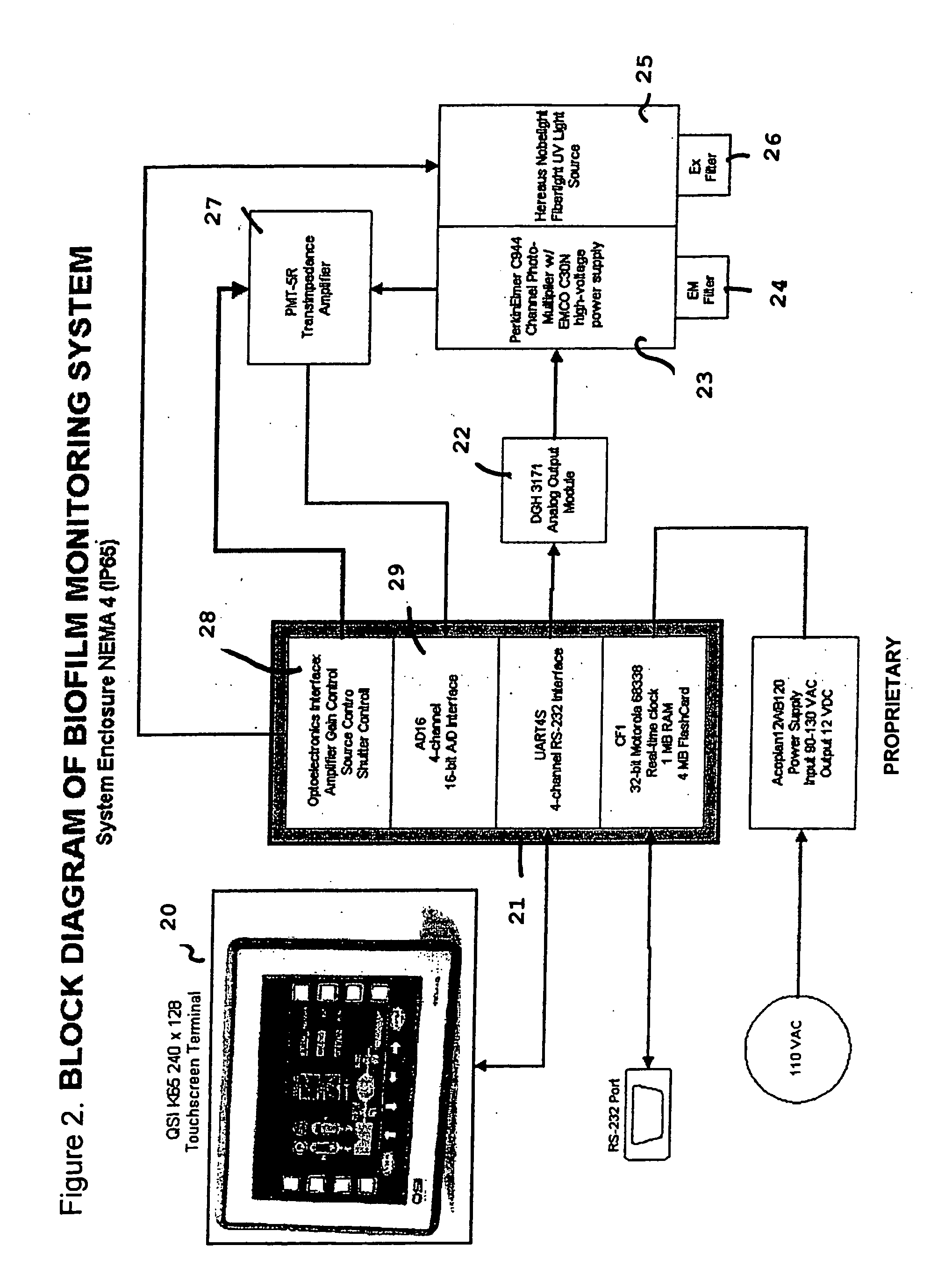Real-time biofilm monitoring system
- Summary
- Abstract
- Description
- Claims
- Application Information
AI Technical Summary
Benefits of technology
Problems solved by technology
Method used
Image
Examples
Embodiment Construction
[0047] The system of the present invention is generic to all fouling organisms while being relatively immune to non-biological interferents. Its simplicity and numerous COTS photonic components provide multiple biomarkers for multiwavelength analysis.
[0048]FIG. 2 is a block diagram of a biofilm monitoring system according to the present invention. The system is operated from a touch screen terminal 20 which is connected to a 4-channel RS-232 interface 21. This interface 21 is connected to an analog output module 22, connected to a C944 channel photomultiplier with a high-voltage power supply 23. The photomultiplier is provided with an emission filter. The photomultiplier is equipped with a fiber light UV light source 25, which has an excitation filter 26. The photomultiplier 23 is connected to a transimpedance amplifier 27 which is connected to both an optoelectronics interface amplifier 28 and a 4-channel 16-bit A / D interface 29.
[0049]FIG. 3 illustrates direct fluorescence detect...
PUM
 Login to View More
Login to View More Abstract
Description
Claims
Application Information
 Login to View More
Login to View More - R&D
- Intellectual Property
- Life Sciences
- Materials
- Tech Scout
- Unparalleled Data Quality
- Higher Quality Content
- 60% Fewer Hallucinations
Browse by: Latest US Patents, China's latest patents, Technical Efficacy Thesaurus, Application Domain, Technology Topic, Popular Technical Reports.
© 2025 PatSnap. All rights reserved.Legal|Privacy policy|Modern Slavery Act Transparency Statement|Sitemap|About US| Contact US: help@patsnap.com



